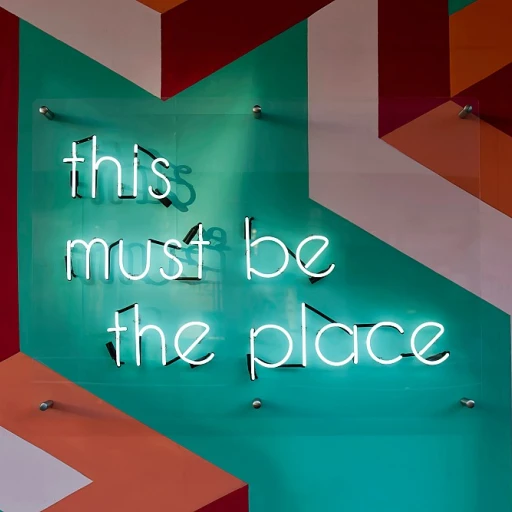Understanding the Candidate Journey
The Importance of Mapping the Candidate Journey
To create a seamless candidate experience, it is crucial first to understand the journey that applicants go through from beginning to end. This journey is not just a simple trajectory from point A to point B; it is a dynamic process that involves multiple stages, each with its unique touchpoints and experiences.
Exploring the Stages of the Journey
The candidate journey typically comprises several key stages:
- Awareness: When a potential candidate first becomes aware of a job opportunity or company.
- Consideration: The phase where candidates assess whether the role and organization align with their career goals.
- Application: Submitting their application and engaging with the initial screening process.
- Interviewing: Participating in interviews and further assessments.
- Decision-Making: Evaluating any job offers and deciding whether to accept.
- Onboarding: Integrating into the company, should they accept the offer.
Recognizing Pain Points and Opportunities
By mapping out the stages of the candidate journey, you can better identify potential pain points and areas for improvement. For example, long waiting periods for feedback or a lack of communication can deter high-quality candidates. Understanding these elements allows recruiters to create positive experiences and set the stage for a successful hiring process.
The Role of Strategy in Enhancing the Journey
Crafting a seamless candidate experience involves strategic planning and a commitment to excellence at every stage. It is beneficial to assess your current hiring process and compare it against industry best practices. This strategic approach can lead to valuable insights and improvements that will make your hiring process more efficient and candidate-friendly. You can learn more about embracing a strategic approach to enhance the hiring process here.
Crafting a Compelling Job Description
Attracting Talent with Irresistible Job Descriptions
Crafting a job description is more than just listing duties and requirements. It's about communicating your company's culture and vision effectively. A compelling job description should not only highlight the role's responsibilities but also address how the position contributes to the larger goals of the organization.
Consider incorporating these elements:
- Clear and Concise Language: Avoid jargon and complex terminology that might confuse or deter potential candidates. Keep the language straightforward.
- Company Culture Insight: Briefly describe what it's like to work at your company. Highlight values, work environment, and the team candidates would be joining.
- Growth Opportunities: Mention potential career paths and development prospects. Candidates are often attracted to roles that offer advancement.
- Inclusive Language: Ensure your description is welcoming to diverse candidates by using gender-neutral language and avoiding bias.
Remember, a well-crafted job description lays the foundation for an effective hiring process, aligning with the seamless approach discussed in remote hiring practices.
The Role of Communication in the Hiring Process
Clear and Transparent Communication
Effective communication is the cornerstone of a positive hiring journey. To ensure your candidates have a favorable perception throughout the process, it's crucial to maintain clear and transparent dialogues. Consistent communication helps in building trust and setting the right expectations.
- Frequent Updates: Keep candidates informed about their application status and the next steps in the process. This can help alleviate anxieties and keep them engaged.
- Timely Responses: Ensure that queries and concerns raised by candidates are addressed promptly. A delay in response can lead the candidate to lose interest or question the organization’s efficiency.
- Inclusive Communication: Tailor your message to match the unique requirements of each candidate. Personalizing your communication can significantly enhance the candidate's experience.
Utilizing Technology Wisely
The role of technology in facilitating effective communication cannot be overstated. Whether it’s through automated email updates or AI-driven chatbots, leveraging technology can streamline processes and improve responsiveness.
- Automated Systems: Implement automated systems that remind candidates of interviews or follow-up on pending information.
- Multichannel Approach: Use various communication channels such as email, phone, or instant messaging apps to reach out and engage with candidates effectively.
Encouraging Two-way Interaction
Communication should not be a one-sided affair. Encouraging a two-way dialogue can help candidates feel valued and respected. It's not just about delivering messages but also about listening actively.
- Encourage Feedback: Provide opportunities for candidates to provide feedback on the hiring process. This input is invaluable for making continuous improvements.
- Interview Dialogue: During interviews, give room for candidates to express themselves and ask questions. This shows that you value their input and are serious about their concerns.
For further insights, consider reading about
transparent approaches to building trust in the hiring process.
Enhancing the Interview Experience
Creating a Welcoming Environment
The interview is often the most nerve-wracking part of the hiring process for candidates. As an employer, it's crucial to create a safe and welcoming environment where candidates feel comfortable expressing their skills and personality. Begin by choosing a neutral and quiet location for the interview, free from distractions and interruptions.
Provide candidates with a clear agenda beforehand, so they know what to expect during the interview. This transparency can help alleviate anxiety and ensure that both you and the candidate are on the same page. Remember, the interview process is not only about assessing the candidate's suitability for the role but also about making a strong impression as an employer.
Engaging Interview Techniques
Employ engaging interview techniques that encourage candidates to open up about their experiences and skills. Avoid rapid-fire questioning or placing undue pressure on them. Instead, foster a conversational pace where candidates can elaborate on their answers.
Incorporate behavioral and situational questions that allow candidates to demonstrate their problem-solving abilities and adaptability. These types of questions can often provide a clearer picture of how a candidate might fit within your team and company culture.
Feedback and Follow-Up
One of the key aspects of a positive interview experience is timely and constructive feedback. Regardless of the outcome, candidates appreciate receiving feedback on their performance. It demonstrates respect for their time and effort in participating in the interview process.
Set a standard timeframe for providing feedback and stick to it. If a decision takes longer, update candidates regularly on where they stand. This not only keeps candidates in the loop but reinforces your commitment to a respectful and organized hiring process.
Remember, enhancing the interview experience is about treating candidates with kindness and professionalism that leaves a lasting impression, even if they aren't ultimately selected for the role. This step is vital for maintaining a consistent candidate experience throughout the entire hiring process.
Providing Constructive Feedback
The Importance of Timely Feedback
Providing timely feedback is crucial to maintaining a positive candidate experience. Candidates invest time and energy into the application process, and they deserve to know where they stand. Timely feedback not only respects their efforts but also helps them improve in future applications.
Be Honest and Constructive
Feedback should be honest and direct, yet constructive. Instead of focusing solely on what a candidate did wrong, highlight their strengths and offer practical advice for improvement. This approach can turn a potentially negative experience into a valuable learning opportunity.
Personalize Your Feedback
Personalized feedback shows candidates that you see them as individuals, rather than just another applicant. Tailor your feedback to the candidate's unique skills and experiences, making it relevant and helpful. This personal touch can leave a lasting positive impression.
Create a Feedback Framework
Developing a standardized feedback framework ensures consistency and clarity throughout the hiring process. This framework should outline when and how feedback is delivered, ensuring that all candidates receive a fair and equal experience. A clear process makes it easier for hiring managers to provide feedback and helps candidates understand what to expect.
Leveraging Feedback for Continuous Improvement
The feedback process isn't just beneficial for candidates; it's an excellent opportunity for organizations to learn and grow. Analyzing feedback trends can reveal insights into the effectiveness of your hiring process and highlight areas for improvement. By continuously refining your approach, you're not only enhancing the candidate experience but also strengthening your overall hiring strategy.
Measuring and Improving Candidate Experience
Evaluating Candidate Feedback
To effectively measure the candidate experience, collecting feedback is essential. By gathering insights directly from candidates, you can identify strengths and weaknesses in your hiring process.
Start by creating a feedback system that candidates find easy to use. This could involve sending surveys after different stages of the hiring journey, allowing candidates to share their opinions on the job description, communication, and the overall interview process.
Analyzing the Data
Once you have collected feedback, it's time to analyze the data. Look for common themes or recurring issues that candidates highlight. Are there specific stages of the hiring process that receive negative comments? Understanding these patterns is key to making informed improvements.
Consider both quantitative data, such as survey scores, and qualitative feedback, like text responses. This comprehensive approach will provide a fuller picture of the candidate experience.
Implementing Improvements
Armed with the insights from your feedback analysis, you can make meaningful changes to enhance the candidate experience. Prioritize areas for improvement based on the feedback you've received and brainstorm solutions with your hiring team.
For instance, if candidates report unclear communication during the hiring process, you might revisit how and when updates are provided. Enhancing the interview experience could involve refining interview questions or training interviewers for better engagement.
Tracking Success Over Time
It's essential to continually monitor the impact of your improvements. Establish key performance indicators (KPIs) related to candidate satisfaction and assess progress over time. Comparing new feedback with past data can reveal whether your changes have been successful or if further adjustments are needed.
A commitment to refining the candidate experience not only elevates your hiring process but also builds a positive reputation for your organization. By systematically measuring and enhancing the experience, you contribute to a more seamless journey for all candidates.













